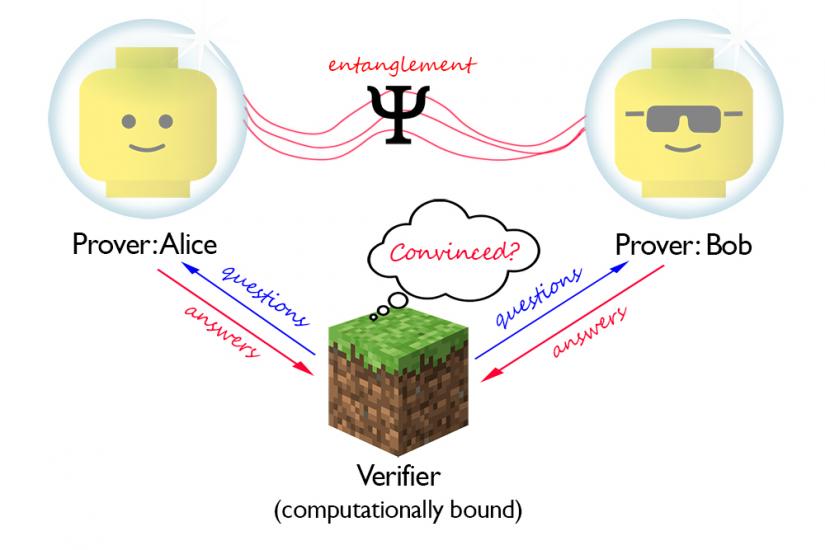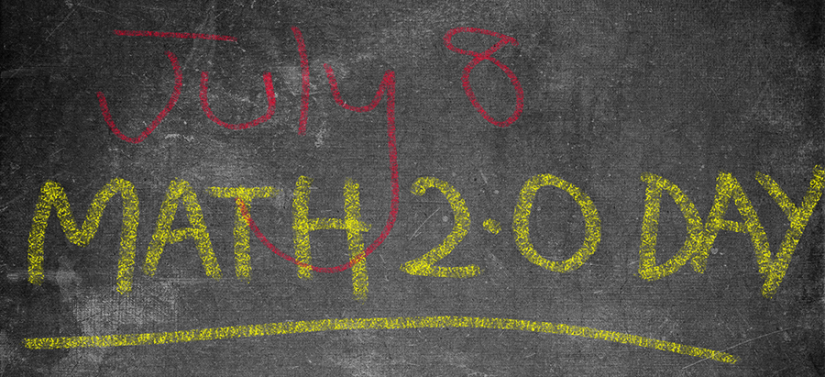Well-known mathematics and physics theories may be re-examined after new quantum findings.

QSI researchers A/Prof Troy Lee (left) and Prof Zhengfeng Ji (right) discuss quantum information theory.
Image: Andy Roberts.
It is fascinating to see that our complexity-theoretic approach can be made to work and have interesting implications in both pure mathematics and physics."
Professor Zhengfeng Ji, UTS Centre for Quantum Software and Information
Earlier this year, a collaborative research paper released by Professor Zhengfeng Ji, together with four other computer scientists, sent shock waves of excitement across the global science community.
The team of researchers inadvertently disproved the Connes' embedding problem (first posed by French mathematician Alain Connes in 1976) while working on a computational complexity problem in quantum correlations.
This finding will have far-reaching impacts across other scientific disciplines.
Just like a Rube Goldberg machine set in motion, seemingly unrelated theories will also topple over, once experts verify their work.
The researchers used computational complexity tools and quantum information theory to describe the power of two entangled provers, commonly named Alice and Bob.
“We started with the belief that the Connes' embedding problem should be true, ” said Professor Ji, Director of the UTS Centre for Quantum Software and Information. “Rather than disproving it, we tried to prove some upper bound on the amount of entanglement needed,”
“But what we found surprised us all,” he said.

Quantum Local Games The entangled provers called Alice and Bob have a common aim. They need to convince the verifier of the validity of certain statements. Alice and Bob interact with the verifier, but can’t communicate with each other.
The connection between the Connes' embedding problem and the complexity of entangled provers, formalized as the complexity class MIP*, is a well-known fact in the research community through its connections to Tsirelson’s problem in mathematical physics. Since MIP* is computable, a finite amount of shared entanglement is sufficient for Alice and Bob to play any fixed MIP* protocol, optimally.
“Our result shows that MIP* is not computable,” Ji said. “As a consequence, both the Connes' embedding problem and Tsirelson’s problem must, to our surprise, have negative answers,”
“It is fascinating to see that our complexity-theoretic approach can be made to work and have interesting implications in both pure mathematics and physics." he said.
The paper titled MIP*= RE, is a culmination of ideas formed over ten years between five researchers, Zhengfeng Ji of the University of Technology Sydney, Anand Natarajan and Thomas Vidick of the California Institute of Technology, John Wright of the University of Texas at Austin, and Henry Yuen of the University of Toronto, and many other contributors in the quantum information community
And with today marking Math 2.0 Day, a celebration of mathematics and technology, QSI’s quantum researchers certainly have something to shout about.


